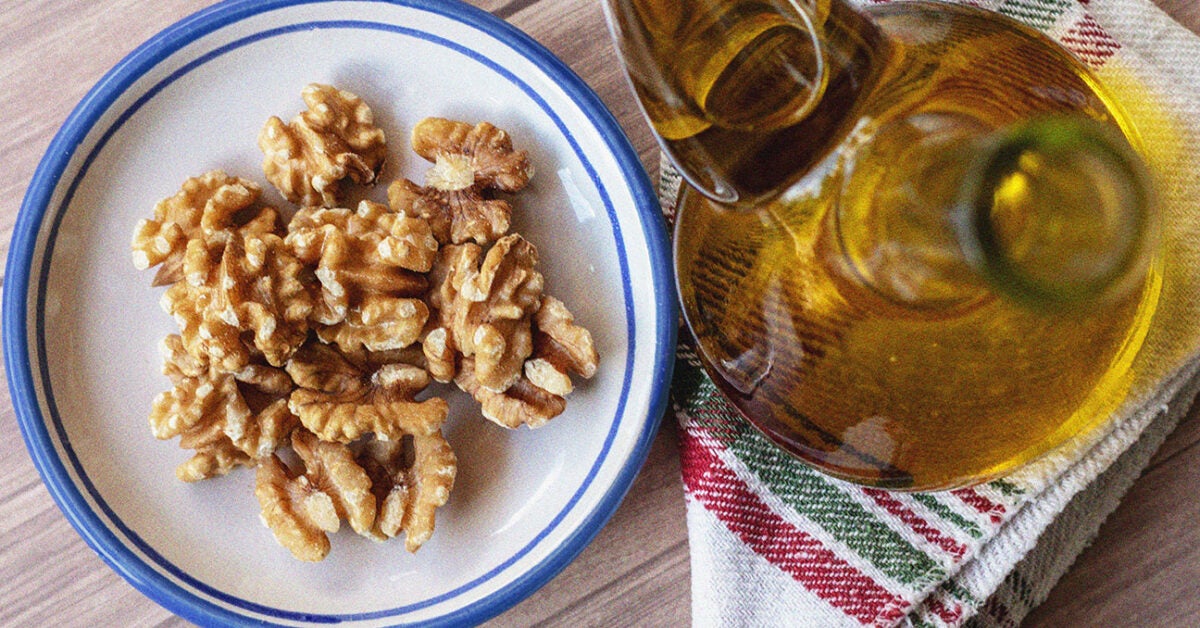Vitamin F is not a traditional vitamin, but a term for two essential fatty acids: alpha-linolenic acid and linoleic acid. People need to consume these essential fatty acids as part of their diet in order to stay healthy.
Fatty acids play many important roles in the body, contributing to the regulation of bodily processes, disease prevention and more.
In this article, we discuss vitamin F in more detail, including its potential health benefits and deficiency symptoms. We also list the dietary sources of this vitamin and see if the skin products that contain it are beneficial.
Vitamin F is not a traditional vitamin, but a term for two fats: alpha-linolenic acid (ALA) and linoleic acid (LA).
ALA and LA are long-chain polyunsaturated fatty acids (LC-PUFAs). ALA is an omega-3 fatty acid and LA is an omega-6 fatty acid.
Scientists coined the term vitamin F in the 1920s to describe ALA and LA. The scientific community has since dismissed the term, but people may still notice that skin care companies refer to vitamin F in their product marketing.
People need a balance between omega-3 and omega-6 fatty acids to be healthy. According to a 2018 review, a diet that favors omega-6 is pro-inflammatory and contributes to atherosclerosis, obesity and diabetes.
According to the same review and another 2014 review, fatty acids play the following roles in human health:
- maintain the structure, flexibility and fluidity of cell membranes
- producing and storing energy
- ensuring normal growth and function of the brain and retina
- regulating inflammatory processes
- influencing the synthesis of neurotransmitters and signaling
- prevention of chronic diseases such as cardiovascular disease, hypertension and rheumatoid arthritis
The body can convert ALA into eicosapentaenoic acid (EPA) and docosahexaenoic acid (DHA), which are anti-inflammatory omega-3 fatty acids.
However, research suggests that this conversion, which occurs mainly in the liver, only occurs at a rate of less than 15%. Fish make this conversion in their bodies, so eating fish can be a more reliable way to get the benefits of EPA and DHA.
A 2019 review indicates that in the United States, there is no dietary reference intake (DRIs) for ALA or LA due to inadequate information. Instead, experts define an adequate intake (AI) based on the highest average intake among adults in the United States, where there is generally no disability.
The review authors suggest that people who eat a vegan diet may need higher amounts of ALA to avoid deficiency. They may also need to lower the LA to achieve a good omega-6 to omega-3 ratio. The researchers suggest a maximum ratio of 4: 1 to omega-6 and omega-3.
Doctors do not routinely test the status of essential fatty acids, and a person may have an insufficient intake, but without symptoms. However, some people will experience symptoms.
According to the Linus Pauling Institute, clinical signs of essential fatty acid deficiency include:
- a dry, scaly rash
- decreased growth in children and babies
- increased susceptibility to infection
- poor wound healing
- cognitive impairment
LA and ALA are essential nutrients and people need to consume them as part of their diet. The Linus Pauling Institute notes that the following foods are good sources:
ALA food sources
People looking to increase their intake of ALA may incorporate more of the following into their diet:
- flaxseed and flaxseed oil
- Chia seeds
- walnuts and walnut oil
- canola oil
- soy oil
- mustard oil
- firm tofu
LA Food Sources
The following foods contribute to the intake of LA:
- safflower oil
- sunflower seeds
- pine nuts
- Sunflower oil
- corn oil
- soy oil
- pecan
- Brazil nut
- Sesame oil
Topical application
People can also use essential fatty acids topically on the skin. Research suggests that applying olive oil or sunflower seed oil to the skin can reduce the symptoms of flaking.
In addition, other research indicates that applying ALA to the skin can help prevent the development of wrinkles. A 2011 review also suggests that LA can be a powerful anti-aging agent for the skin.
Vitamin F is a term for two essential fatty acids: ALA and LA. People need to consume these nutrients to stay healthy and avoid the risk of chronic diseases.
Certain plant foods, such as nuts, seeds and oils, are good sources of ALA and LA. People can also apply fatty acids topically to the skin, which can benefit rough and dry skin and improve the signs of aging.
People who follow a vegan diet should be careful to consume the correct ratio of LA to ALA. Signs of deficiency can include dry skin and poor wound healing, although symptoms are not always apparent.
